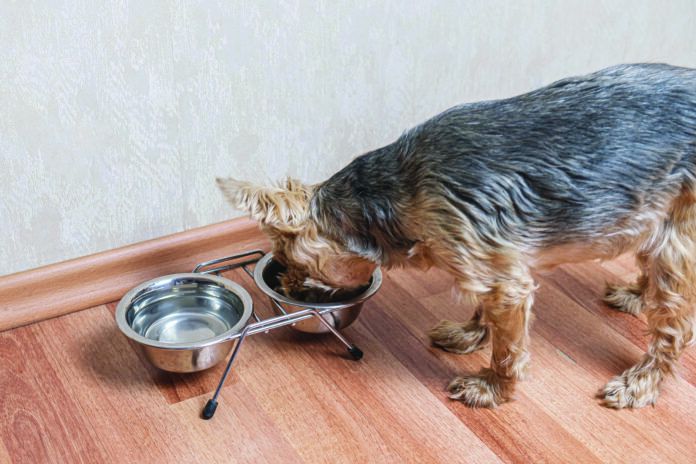Are you aware of the Food and Drug Administration’s pet food hygiene guidelines for minimizing the spread of harmful bacteria in your home that can make you or your dog sick? If not, you’re by no means alone. When researchers asked pretty much the same question of more than 400 people with dogs participating in a study about pet food handling and pet food bowl hygiene, less than 5 percent of them knew such guidelines existed. It’s particularly concerning in light of the fact that 36 percent of the households surveyed had children younger than 13 or immunocompromised family members — or both. Those two groups of people have immune systems that might not be as good as those of healthy adults at vanquishing harmful bacteria that could make them sick.
How big a problem is subpar hygiene when it comes to food and water bowls? Previous research that looked at 32 household surfaces showed that pet food dishes had the ninth highest level of contamination with bacteria. Another study indicated that the surfaces of pet food bowls have higher bacterial loads than toilets.
But do proper handling and washing really help?
To see if properly handling pet food and washing food and water bowls can really cut down on bacterial counts, the researchers swabbed pet bowls for bacteria in 50 households, then divided those households into three groups for one week. One group was supposed to just keep doing whatever they did to feed their dogs. Another was asked to institute FDA guidelines to keep pet food bowls clean. The third group was put to an even more stringent test; they were asked to follow the government’s guidelines for handling food meant for people as well as pets.
The results? A second swab for bacteria after the week went by showed that those following either set of official guidelines had a bacterial reduction in the range of 90 to 99 percent. Those who did what they always did had no reduction in bacterial counts on their dogs’ bowls. It was an extremely meaningful difference.
So what should people be doing?
The FDA’s tips for preparing pet food are not complicated and won’t be surprising, even though they are not practiced by large numbers of people. The main recommendations:
- Begin and end with clean hands. Both before and after handling dog food and treats, wash your hands for at least 20 seconds with soap and hot water.
- Wash pet food bowls and scooping utensils with soap and hot water after each use. [Italics ours.]
- Do not use your pet’s food bowl as a scooping utensil. Use a clean scoop, spoon, or cup instead. Use the scooping utensil only for scooping dog food.
It’s certainly all logical, even intuitive, yet the study, published in the journal Plos One, found that fewer than 25 percent of the households surveyed routinely washed their hands as recommended prior to handling dog food. And one in five respondents reported washing their dog’s food dish only once weekly, on average. Many said they washed the dish less than every 3 months — or not at all.
Now that you know…
Unfortunately, after the one-week experiment, only 8 percent of participants who had been instructed to follow the protocols for clean dog dishes said they were likely to adhere to the recommendations long-term. Don’t be complacent. Now that you know the simple guidelines for keeping your pet’s bowls clean and thereby minimizing the presence of bacteria that could make you or your dog sick, make pet dish hygiene a habit.
It has been said that it takes only 100 days to instill a new habit. Even if you instill only one good pet hygiene habit at a time, your house will be much more free of bacteria that could harm you or your dog in less than a year.





